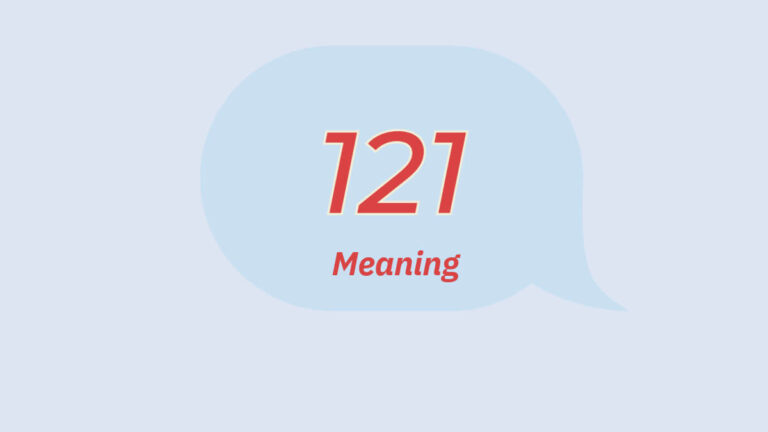What Does Mane Mean In Texting? Ultimate Guide to Understanding and Using It
We all know that digital communication has changed the way we talk. You’ll find that we often use slang to get our points across. One such slang term that has caught attention is “mane.” This guide will give you an overview of what “mane” means in the world of texting culture. We’ll explore its significance, origins, and how people commonly use it.
What Does “Mane” Actually Mean in Texting?
What does mane mean in texting? In short, “mane” is slang for “man” or “friend.” People often use it to refer to someone they know well.
Origins of “Mane”
The term “mane” isn’t new, but its use in digital slang is more recent. It originated in Southern American English. From there, it made its way into the language of texting and chatting.
Common Uses and Examples of Mane
Here are some ways you might see “mane” used in a text:
- Hey mane, what’s up?: This means “Hey friend, how are you?”
- Mane, that was crazy: Here, “mane” is used to express astonishment or agreement.
- I got you, mane: This phrase expresses support or understanding.
The term “mane” has its roots in Southern American English. It’s now a common part of texting language, often replacing “man” or “friend.”
The Contexts Where “Mane” Is Used
Different Scenarios and Settings for Using “Mane”
You’ve already learned what “mane” means, but when is the right time to use it? Let’s start by understanding the different scenarios and settings. This term fits well in casual conversations among close friends. It’s often used in text messages, online chats, and sometimes even in casual work settings. But remember, using “mane” with your boss might not be the best idea, unless you’re on really friendly terms.
The Tone It Sets in a Conversation
Using “mane” can set a conversational tone that’s laid-back and friendly. When you say “Hey mane, long time no see,” you’re giving off a vibe of warmth and familiarity. It tells the other person that you consider them a close friend. But you should be mindful of how and when you use it to avoid sending the wrong message.
How It Can Be Misinterpreted
The use of “mane” can sometimes be misinterpreted, especially in texting scenarios where tone is hard to judge. For instance, someone who is not familiar with this slang term might find it confusing or think it’s a typo. There’s also a risk of appearing too casual or informal, especially in professional settings.
“Mane” Vs. Similar Slang Words
Now let’s dive into how “mane” compares to other slang words like “man,” “dude,” or “bro.” At a first glance, these words seem interchangeable. They all refer to a person, usually a friend. However, there are some differences that are important to know.
Here are some key differences and subtle nuances:
- “Man”: This is the most generic term and is widely understood. You can use it in many settings, including professional ones.
- “Dude”: This term is casual like “mane,” but it’s more commonly used in Western American English.
- “Bro”: This term connotes a deeper level of friendship and is often used among male friends.
- “Mane”: This slang is more regional, tied to Southern American English, and signals an informal, close relationship.
Why It Matters to Choose the Right Term
Choosing the right term can make a big difference in how your message is received. Using “mane” with a close friend could strengthen your bond, but using it in a formal email could be a bad idea. Knowing when to use each term helps you navigate different social norms and digital etiquettes effectively.
The Dos and Don’ts of Using “Mane” in Texting
Guidelines for Using “Mane” Effectively
You’ve learned a lot about the term “mane,” but how can you use it without stepping on toes? First, be mindful of the texting rules that come with slang. Here are some quick guidelines or Dos for using “mane” in a way that adds value to your conversations:
- Use it With Close Friends: If you’re talking to someone you’re close with, using “mane” can add warmth to your messages.
- Consider the Context: Make sure you’re in a casual setting before using slang terms like “mane.”
- Check the Tone: If the conversation is light-hearted and informal, feel free to include it.
Common Mistakes to Avoid
It’s also crucial to know what not to do. Here are some common Don’ts or mistakes that people often make when using “mane”:
- Don’t Use it in Formal Settings: Save this term for casual conversations, not business emails or formal events.
- Don’t Assume Everyone Understands: Not everyone will be familiar with this slang term, so be cautious when using it with new people.
- Don’t Overuse: Like any slang, using it too often can make your messages seem less sincere.
Considerations for Different Types of Conversations
Finally, think about the types of conversations you’re having. If it’s a casual chat with a friend, “mane” fits right in. But in a job interview or with someone you’re not close to? Probably not the best choice. Knowing when and how to use “mane” helps you follow slang best practices and keeps your texting game strong.
Conclusion:
So why does all of this matter? Understanding slang like “mane” can help you connect better with people. You’ll not only fit in with various online cultures, but you’ll also navigate the tricky waters of digital communication with ease.
Key Takeaways
Here are some final takeaways:
- Know Your Audience: Understand who you’re talking to before using “mane.”
- Context Matters: Make sure the setting is right for using slang.
- Be Mindful of Tone: The tone of your conversation will guide you on when to use “mane.”
Frequently Asked Questions (FAQs)
Q1: What does “mane” mean in texting?
A1: “Mane” is a slang term used to refer to a friend or person in casual and informal conversations. It’s often used in text messages or online chats.
Q2: Where did the term “mane” originate?
A2: The term “mane” is often associated with Southern American English and is used informally to denote a close relationship or friendship.
Q3: When should I use “mane” in texting?
A3: Use “mane” in casual settings with close friends where the conversation is laid-back and informal. Avoid using it in formal or professional situations.
Q4: What are the dos and don’ts of using “mane”?
A4: Do use it with close friends and in a casual context. Don’t use it in formal settings or with people who might not understand the slang.
Q5: How does “mane” differ from other slang like “man” or “dude”?
A5: “Mane” is more specific to Southern American English and signals a close relationship. “Man” is more generic, while “dude” is commonly used in Western American English.
Q6: Can using “mane” be misinterpreted?
A6: Yes, “mane” can be misinterpreted as too casual or even as a typo if the other person is not familiar with the slang.
Q7: Is it appropriate to use “mane” in a work setting?
A7: Generally, it’s not recommended to use “mane” in a professional setting unless you’re on extremely casual terms with your colleagues.
Q8: What tone does using “mane” set in a conversation?
A8: Using “mane” sets a casual, friendly, and laid-back tone in a conversation.
Q9: What are some key takeaways for using “mane” effectively?
A9: Know your audience, consider the context, and be mindful of the conversational tone to use “mane” effectively.
Q10: Why is understanding “mane” important in digital communication?
A10: Understanding “mane” and other slang improves your ability to connect with different online cultures and enhances your digital communication skills.


